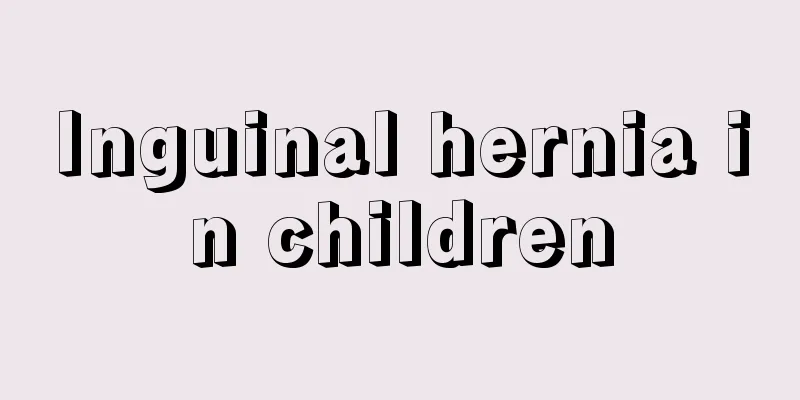Inguinal hernia in children

|
Inguinal oblique hernia is still relatively common in children. This is mainly because babies have relatively low resistance. If you are not careful, it may cause some diseases. After it happens, conservative treatment is needed first. Try not to use any surgical treatment unless it is absolutely necessary to avoid secondary damage to the baby's body. In fact, conservative treatment can relieve symptoms. 1. Conservative treatment Conservative treatments include hernia belts, hernia splints, traditional Chinese medicine, etc. These methods can relieve symptoms or delay the progression of the disease, but they cannot cure it. Some inappropriate conservative treatments may even aggravate the condition. This method is only suitable for infants under 2 years old, the elderly and weak, or those with serious illnesses. A special hernia belt is often used to press on the hernia ring to relieve symptoms. 2. Surgery Surgery is the only reliable method for treating inguinal hernia in adults and is less likely to recur. Reducible hernias can be treated with elective surgery, while irreducible hernias should be treated with surgery within a short period of time. Incarcerated hernias and strangulated hernias must be treated with emergency surgery to avoid serious consequences. Surgical treatment is divided into traditional tissue-to-tissue tension suture repair and tension-free hernia repair technology. Currently, the internationally recognized one is the tension-free hernia repair technology, which includes open and laparoscopic procedures. (1) Traditional surgery patients are required to fast before and after surgery, stay in bed for several days, receive intravenous drips, and have a urinary catheter placed. Patients experience severe pain after surgery, slow recovery, and a high recurrence rate. Many patients with coexisting heart, lung, and cerebrovascular diseases cannot undergo surgery because they cannot tolerate general or local anesthesia. Open tension-free herniorrhaphy quickly became popular after being introduced from abroad. The operation can be performed under local anesthesia, with a low recurrence rate and little pain. Generally, only 2 to 5 days of hospitalization are required, and the operation can even be completed on an outpatient basis, with a quick recovery after surgery. (2) Laparoscopic inguinal hernia repair In recent years, laparoscopic surgery has made significant progress. Laparoscopic total extraperitoneal repair (TEP for short) only requires two 0.5cm and one 1cm incisions without entering the abdominal cavity. The hernia sac is pulled back into the abdominal cavity outside the peritoneum, and then an artificial mesh is used to cover the gap of the hernia protrusion. This method is suitable for the treatment of bilateral inguinal hernia and recurrent hernia, and has small trauma, fast recovery and low recurrence rate. |
<<: Children's sudden convulsions
>>: What should babies eat if they are prone to getting angry?
Recommend
How to make appetizers for toddlers?
The editor knows that many babies have the proble...
What to do if your baby cries after getting a vaccination
It is normal for babies to cry after receiving a ...
Child Psychological Counseling and Treatment
Recently, many children have developed autism. Th...
Things to note after the red and blue light treatment
Jaundice is a disease symptom that newborns often...
What medicine should children take for gastrointestinal cold
Gastrointestinal colds are relatively common clin...
Private care for newborn baby girls
Does a baby girl need to have her private parts c...
What should I do if my child has swollen upper eyelids?
Swollen eyelids are a common phenomenon for many ...
Children's self-control
Children's self-control needs to be cultivate...
Causes of excessive phlegm in children in the morning
Of course, parents need to pay attention to the h...
How to deal with facial abrasions in children
If a child has a serious facial abrasion, he or s...
Children's hip ultrasound
Children will always encounter various problems a...
What's wrong with my child's cerebral palsy?
Cerebral palsy in children is one of the most com...
The child still has a fever after the IV drip
Because children have poor resistance, they often...
Nursing measures for infantile labia adhesion
Every child is born healthy, but many babies will...
What's wrong with a child's rotten feet?
Parents must be aware of the phenomenon of rotten...









